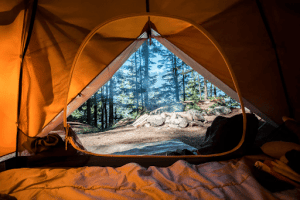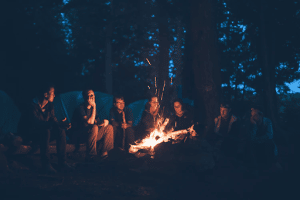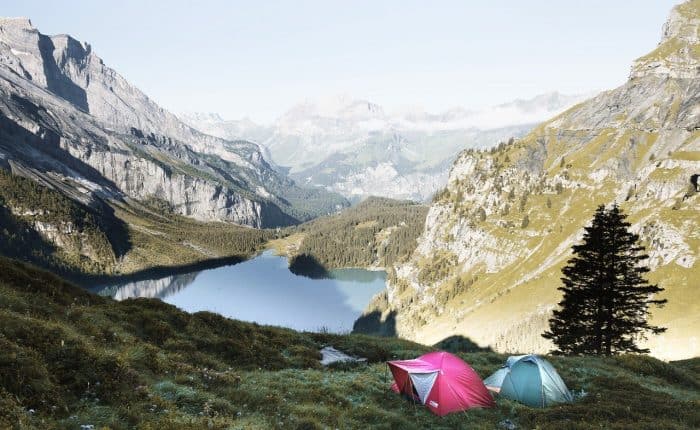The Basics Of Choosing The Perfect Campsite
For the average hiker, choosing the campsite is usually the last part of their journey such as when they get tired or if they stumbled upon a flat open area. However, for those who seek better sleeping in the woods, there are many more important factors that one should take into account when choosing a resting spot. Here are some tips and tricks on how to choose the best campsite for you; and click here to find out more.
Guide For The Perfect Campsite
Find a Body of Water
Always look out for a good spot near the water if you are looking to settle down, about 200 feet away from the shore. Also, make sure that it isn’t a flood-prone zone as we’re sure you would not enjoy spending the night ankle deep in cold water. Some advantages of staying near the water are that animals are usually attracted to the location and if you are up for some fishing, reeling in some fish from the shore is always a tasty option.
Find an Area With a Lot of Trees
Not only will the view look great, but having a thick wall of trees will also prevent the wind from blowing out your campfire while cooking. For those who are camping in cold climates, having trees will also help prevent the chill from swirling into your camp.
Find Flat Ground
It is always easier to pitch a tent on flat ground and take care to avoid any dips in the ground or camping at the bottom of a hill. During rainy conditions, water can easily gather, soaking through your campsite.

Avoid Game Trails
Game trails are paths that are frequently taken by animals and people. Setting up a campsite on them would be like setting up on a footpath or pavement, blocking their route. So take care to avoid any of these trails.
Look For Firewood
One advantage of situating near available firewood is that you don’t have to trek long distances just to set up your campfire. Always make sure that there is a good amount near you.
Avoid Tree Hazards
While trees can help to block the wind, some trees can also cause more harm than help. Avoid any trees that are dead or dangling in precarious positions. A little gust of wind during the night, and they can topple over, destroying the camp.
Consider The Wind
Make sure to position your tent upwind from the campfire you made. You wouldn’t want the wind blowing the smoke from your cooking right into your tent, don’t you?
The Four W’s Method
A good way to remember all the key factors of a good campsite is to keep in mind all the four Ws (wind, water, wood, and widow makers).
Wind
Usually, when people set up a campsite, they find a large open area without taking into account shelter from the wind. For those who intend to start a fire and do some cooking, the wind plays a very large role in whether you end the night with a successful dinner. Setting up camp near thick dense trees is one way to block the wind out of your camp. In addition, strong winds can ruin your camping experience if you have to constantly fight it, which beats the purpose of relaxing and having a good time. Tents and hammocks may even be blown away if the wind is strong enough.
It is also important to figure out the direction of the wind current. Always make sure that the tent itself is upwind from the campfire; the wind has to blow fire and smoke away from your tent, not towards it. Not only will this keep the air smoke-free, but it also avoids a potential fire hazard in the campsite.
Experience the Insider community that takes your international lifestyle to the next level. Download your FREE guide
"18 Steps to Implementing Your Plan B" instantly!
Water
While water can be a great resource when it comes to camping, it can also turn into danger in the right conditions. Avoid areas that are prone to floods by looking out for dried mud and a lack of plant-life on the ground. During rainy days, certain areas are susceptible to flash floods and rising water levels from the nearby body of water. Ideally, you would want to be near water, but not too close; close enough that it is convenient to walk over for any of your water needs. In addition, avoid still water sources as they can serve as breeding grounds for mosquitoes and other types of insects. Not to mention, some animals may pay a visit.

Wood
Look out for dead standing trees. These are trees that have died but haven’t fallen over yet or are held in place by other trees. In the right conditions such as strong winds, this can be the final push for dead trees to fall over. Not only can this immediately destroy the camp, but it also becomes a matter of life and death. So be incredibly careful when choosing your trees as well. Especially for those camping in cold climates, accessibility to firewood is another important factor. It shouldn’t be too far away from where it takes a lot of effort to bring to the campfire and abundant enough that it can last you for the duration that you are camping there.
Widowmakers
Similar to dead standing trees, widow-makers are large pieces of loose branches that have fallen off a tree but are held in place by other branches and trees. All it takes is a good gust of wind to toss them out and onto the ground, which can be an incredibly dangerous thing to happen. Ideally, it is nice to camp near trees, but not directly under them. Take care to properly inspect the area before you pitch your tent. Safety is always the most important thing to note when you are out alone in the woods.
Avoid Game Trails
Setting up camp near a trail will expose you to wild animals such as raccoons and deer. In worse case scenarios, you might even find a bear ransacking your campsite.
Conclusion
While camping is always a fun and spontaneous activity, as you are out in the wild, it is always important to put safety first. Nobody wants to spend the time repairing the damage inflicted onto a bad campsite nor get injured while in the woods. Put safety first and you can have heaps of fun later!
Like Our Articles?
Then make sure to check out our Bookstore... we have titles packed full of premium offshore intel. Instant Download - Print off for your private library before the government demands we take these down!







